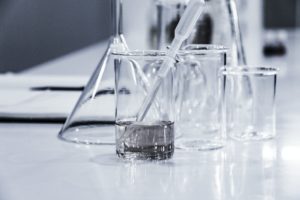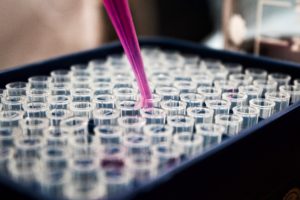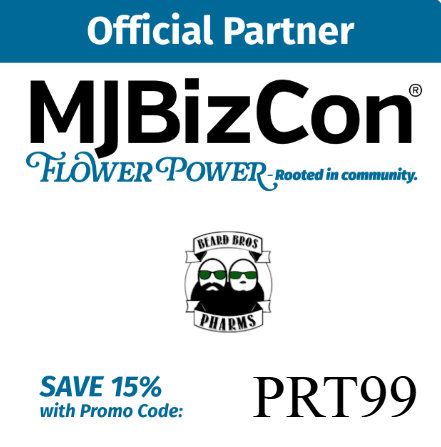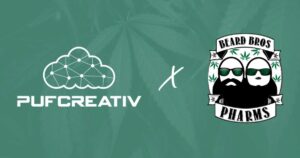 With their new series Higher Learning, Beard Bros Pharms and Beard Bros Media are partnering with the brightest minds in cannabis in a collaborative educational experience that connects the curious to the connoisseurs like only the Bros can.
With their new series Higher Learning, Beard Bros Pharms and Beard Bros Media are partnering with the brightest minds in cannabis in a collaborative educational experience that connects the curious to the connoisseurs like only the Bros can.
The main purpose of our new educational series Higher Learning is to take information that is already understood by experienced operators within the industry and make it available to a much wider audience.
Our next installment is in the hardware and technology sector with Xylem Technologies, and they are going to cover safety issues that can occur with lab safety issues that are not covered in MSDS sheets and SOP’s.
I’m sure we can all understand the need for safety when working with potentially volatile elements in a lab setting. We are excited about working on this with Jeff in order to bring you as much information as possible to operate safely. His experience in this comes from years of working in labs and designing equipment that functions in lab environments.
Lab safety should be an integral component of every process and function throughout any facility — for more than just a task to fulfill or a box to check. It should come as no surprise that a paramount reason to practice thorough, comprehensive lab safety is to protect the health and safety of all employees — those who work hands-on in the lab or in a process, as well as those throughout the facility.
Finally, lab safety plays a key role in the credibility and reputation of the facility, which can be damaged — sometimes irreparably — if the facility becomes known for safety mishaps or shoddy standards.
The impact of lab safety is far-reaching affecting everything from employee health to the bottom line and the ongoing existence of the facility. With these examples in mind it’s easy to understand that lab safety is much more than a requirement on a checklist, it effects every employee and customer.

It is easy to read a MSDS sheet on a chemical or follow equipment safety SOPs – that is easy. What is hard are lab safety issues that are not written. Many of these safety issues come from training others in the intersection of cannabis with lab environments, and unfortunately most of these were witness by me in one form or another. I’ve come up with my 3 items below that are most missed (by my observation).
This guide is not here to cover the comically obvious “do not use open flames” around hydrocarbons or “why didn’t you use a respirator” when handling drums of chemicals but the hidden and often overlooked items that impact company and workers.
“Nothing in the world is more dangerous than sincere ignorance and conscientious stupidity.”
― Martin Luther King Jr.
Fire / Explosion – from Clothing Static Discharge
Solution: Anti-Static Clothing for Butane / Ethanol environments [C1D1, C1D2] – Even when there is constant air flow to remove volatiles, if a person walks into the gas midstream and initiates a spark from a nylon or poly jacket there will be a fire and explosion. Anti-static work jackets and shirts that can mitigate this danger for less than 40 dollars. Most people don’t realize how explosive hydrocarbons can be – many times in a lab facility the hydrocarbon is aerosol and behaves less like a flambe dessert and more like a hand grenade.
Broken Bones / Cuts / Contusions – from Automated Equipment Catching Loose Clothing
Solution: Compression Clothing for Automated Machinery Workers – Getting pulled into an automated machine is not good for anyone. From automated pre-roll system to flow wrappers – these machines have several “stamping” and “cutting” parts that no one wants to stick their hand into. It is best to avoid “lab coats” and “disposable sleeves” that are loose fitting and can get caught – use more compression sleeves that are form fitting. I know from personal experience that getting pulled into a machine and is not fun.
Liver Damaged from Ethelene Glycol poisoning
Solution: Use propylene glycol – Ethylene glycol is a very useful circulation fluid for several heat transfer applications from rotavaps to jacketed reactors to heat baths. The problem is Ethelene glycol is deceptively sweet and can be mistaken for corn syrup and when ingested, will cause liver damage. Many labs are right next to kitchens for edibles – risks contamination without anyone knowing. It is best to use PG (which is food safe) as a heat transfer fluid even if performance is degraded on equipment due to worse flow characteristics. And yes, I actually tasted ethylene glycol once (yes it is sweet) blowing out a heat exchanger.
Safety is important and should be addressed weekly at manufacturing meetings – don’t put anyone at risk of injury – this is particularly important for manufacturing workers who are at risk on the front line and company earning on the bottom line.
Read our first article in the Higher Learning Series: Xylem Tech on Methods for Heating Extracts here.
Learn more about Xylem Technologies at Xylem Technologies





















